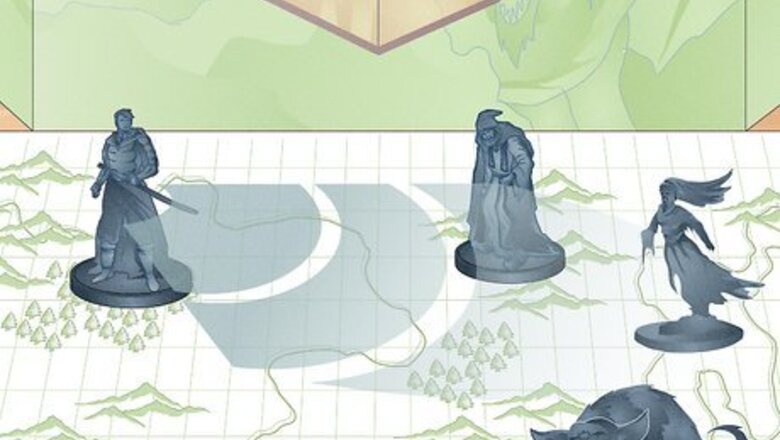
views
- Passive perception measures a character's awareness of the world and determines whether they can detect hidden objects and traps.
- Calculate passive perception by adding 10 + your character's Wisdom modifier. If they have proficiency in perception, add their proficiency bonus too.
- Add +5 to a character's passive perception if they have advantage, and subtract -5 if they have disadvantage.
What is passive perception in D&D 5e?
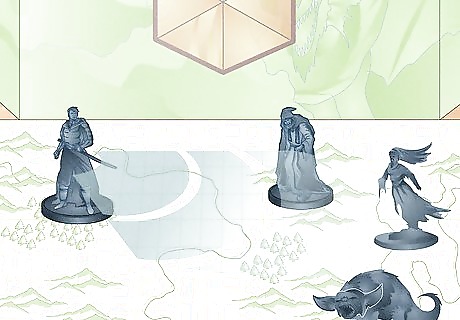
Passive perception is a character's awareness of their environment. Is your character the type to notice those mysterious markings on the floor from 20 feet away, or are they so oblivious that they'll walk right into a trap without realizing it? Passive perception measures how closely your character instinctively analyzes their surroundings and their ability to see when something is out of place or warrants a closer look. Passive perception is something your character does automatically; it's always "on." They may notice things other characters don’t if their passive perception is high. Say your character's passive perception is 15, and another's is 9. If the DC (difficulty class) to detect a secret door is 13, your character would notice it—but the other would not. Passive perception can also be used to detect hidden things like traps, creatures that are trying to be stealthy, signs of an upcoming ambush, or an attempt at pickpocketing. For example, if you're in a crowded city square, your character might be able to notice the urchin pickpocketing them if their passive perception is higher than the urchin's stealth.
Passive Perception Formula
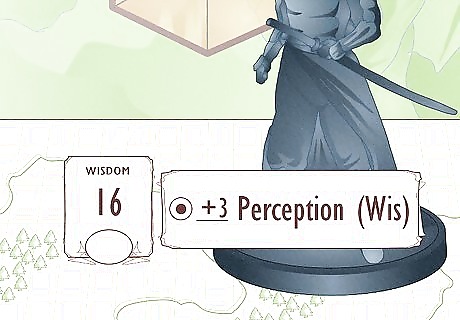
Add 10 + a character's Wisdom modifier to calculate passive perception. The usual formula to calculate passive perception is simple! Just find your character's Wisdom modifier (which should be next to their Wisdom score on the character sheet) and add 10 to it. Voila! That's your character's base passive perception. For example, say your character's Wisdom score is 16. That means their Wisdom modifier (located next to that score) should be a +3. Therefore, your character's passive perception would be 10 + 3 for a total of 13.
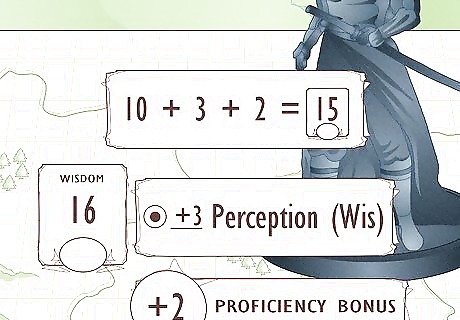
Apply a proficiency bonus if your PC is proficient in perception. If a character has proficiency in the perception skill, there's an extra step to the equation! In D&D 5e, you can select a few proficiencies for your character, which are skills they're especially good at. If your character is proficient in perception, add the current proficiency bonus to their passive perception score. For example, if your character has a Wisdom score of 16, a +3 modifier, and a proficiency bonus of +2, then their passive perception is 10 + 3 + 2 for a total of 15. Remember that proficiency bonuses change as you level up. Your character will begin at level 1 with a +2 bonus, but by the time they're level 20, that bonus will be a +6.
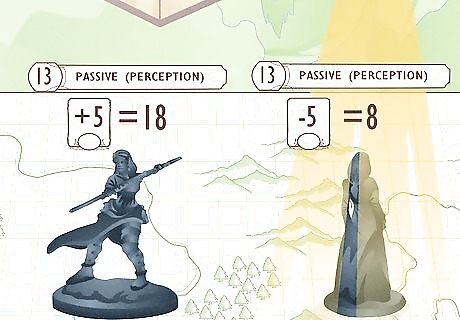
Adjust your character’s score if they have advantage or disadvantage. Having advantage usually means rolling 2d20 and taking the higher roll, while having disadvantage means rolling 2d20 and taking the lower. However, you don't have to roll for passive perception. Instead, add or subtract 5 from your passive perception score, depending on whether you have advantage or disadvantage. For example, say you have advantage on all perception checks. That would mean that you get a +5 to your passive perception. So, if your base score was a 13, it'd be 18 with advantage. Similarly, you get a -5 to your passive perception at disadvantage. Say your character has sunlight sensitivity; every time they're in the sun, their passive perception decreases (so, if it's a 13 normally, it'd be 8 with disadvantage). If your character has advantage or disadvantage in perception, it should be marked on your character sheet next to the perception skill.
Raising Passive Perception

Increase a character's Wisdom score to improve their perception. In D&D 5e, every skill is affected by a character's ability scores (or stats). The higher an ability score, the higher their skill modifier will be. Since perception relies on a character's Wisdom ability score, raising their Wisdom will also result in a higher passive perception. The easiest way to raise your character's Wisdom score is to increase your ability score when you level up. For example: if your character's Wisdom score is 11, all Wisdom-based skills (including perception) get a +0 bonus, meaning their passive perception is 10. However, if you raised your character's Wisdom score to a 14, they'd have a +2 bonus to their Wisdom-based skills, including perception. Skill modifiers are numbers assigned to each character skill. When you need to make a skill check, you add that number to your d20 roll, and it affects your character's chances of success. The ability scores in D&D 5e are Wisdom, Intelligence, Charisma, Strength, Dexterity, and Constitution.
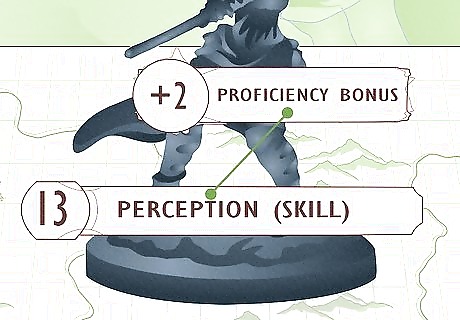
Gain proficiency (or expertise) in the perception skill. When your character has proficiency in a skill, they can add their proficiency bonus to skill checks (in addition to their normal skill modifier). When they have expertise, that proficiency bonus is doubled. You can choose proficiencies when you create your character, both when selecting a class and background. Keep in mind that your proficiency bonus automatically increases as you level up, meaning any skill you're proficient in (like perception) will also steadily improve. Only 4 classes in D&D 5e currently get to have expertise in certain skills: bards, rogues, artificers, and rangers. The highest possible passive perception score can only be attained through expertise in the skill since expertise doubles your proficiency bonus.
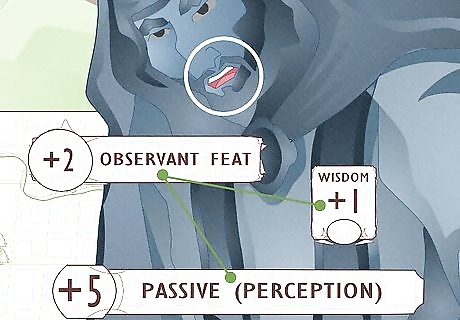
Take a feat that increases your character's Wisdom or perception. Periodically, when you level up, you can choose a feat for your character. Feats represent a newfound talent that gives your character special abilities in the future. While several feats can slightly increase your Wisdom score, only the Observant feat directly improves passive perception. The Observant feat is especially useful because it increases a character's Intelligence or Wisdom score by 1, allows them to read lips, and gives +5 to passive perception and investigation.
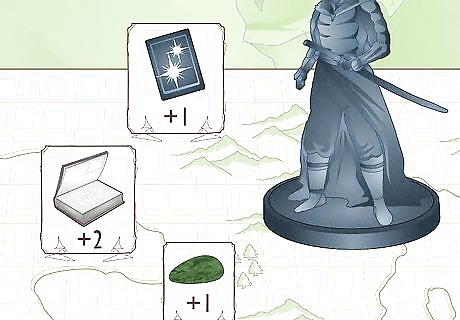
Equip a magical item to boost your character's Wisdom or proficiency. A few magical items in D&D 5e can improve your character's passive perception, so keep your eyes out for anything that can either boost your Wisdom score or your proficiency bonus (but remember, that's only helpful if you have proficiency in perception already). Items like that are rare, so don't be surprised if it's hard to find them! You could use: Ioun Stone of Mastery. This stone will give your character a +1 to their proficiency bonus, improving their passive perception if they're proficient. Tome of Clear Thought. This tome will boost your character's Wisdom score by +2 after they read it, even if their Wisdom is already at 20 (the maximum in 5e). The Deck of Many Things (Star Card). Drawing the star card will grant +1 to the ability score of your choice. However, be especially careful if you ever find this item; drawing a bad card can have disastrous consequences!
Using Passive Perception as a DM
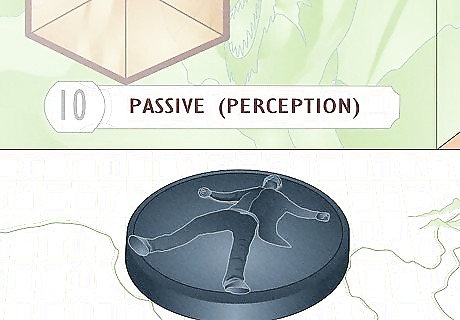
Use passive perception to give players hints or narrate what they see. When you're DMing a game, passive perception can help cut back on the number of rolls your players make (especially when you don't want the entire group repeatedly rolling to explore a single room, for example). You can use it to introduce a story hook, drop an important clue, or steer them in the right direction if they seem lost. For example, say your players are investigating a murder but have a hard time figuring out where to investigate once they leave the crime scene. You could drop a hint related to one or two characters' passive perception scores to help them figure out the next piece of the puzzle. If they need to investigate a bakery after leaving the crime scene, a character with a decent passive perception could pick up the scent of fresh-baked bread or spot floury footprints leading away from the scene.
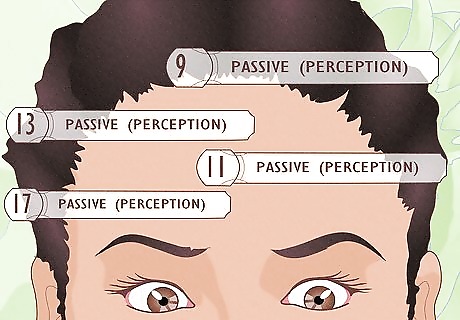
Keep track of players' passive perceptions so you don't have to ask. More often than not, asking players, "What's your passive perception?" is a surefire way to tip them off that something fishy is afoot. To make gameplay feel more authentic and surprising, track their passive perceptions yourself so that you already know which characters would pick up on a clue and which wouldn't. For example, if you made a hidden puzzle or trap that the party is getting close to and you ask them what their passive perception scores are, they'll know something is nearby, even if none detect it automatically.
Passive Perception vs. Active Perception

Passive perception is automatic and doesn't require any rolls. In other words, you typically don't have to do anything with your character's passive perception to use it. It's an awareness that they have innately, and your DM is usually responsible for planning instances where passive perception comes into play; therefore, it's not something you (if you're a player) should have to worry about. For example, if your DM creates a dungeon with a hidden door in it, they'll also need to figure out how high a character's passive perception will need to be to notice that door. Since your DM is the only person who knows about the door and the DC to notice it, they're responsible for saying something like, "With a passive perception of 16, you see strange markings in the far wall…."
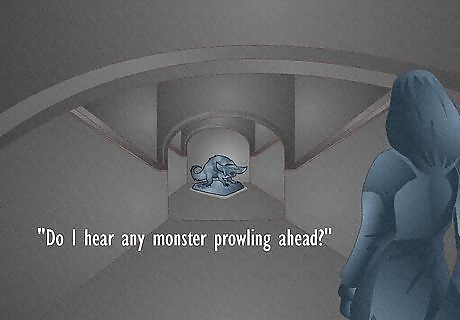
Active perception is a character's conscious attempt to spot things. When something calls for active perception rather than passive, your DM will ask you to make a perception check. Often, your DM will do this when you tell them that your character is actively attempting to look for something specific rather than passively exploring an area. Roll a d20 and add your perception skill bonus to make a perception check. For example, if you're walking down a dark hallway in a dungeon and ask your DM, "Do I hear any monsters prowling ahead?" your DM might say, "Give me a perception check." It's easy to confuse different Wisdom-based abilities, especially perception, and insight. However, they have very different uses! If you're unsure how perception and insight differ, think of it this way: perception is about noticing clues and hidden things in the environment, while insight is your character's ability to read and understand people. So, if you needed to try and spot a trap, you'd roll for perception. If you needed to see if an NPC was lying, you'd roll for insight.




















Comments
0 comment